The Spatial Ecology of Manta Rays: Movement, Habitat Use and Connectivity
2016 - 2021
Dr. Asia Ono Armstrong (Haines)
Keywords: Mobulid • Elasmobranch • Planktivore • Zooplanktivore • Movement Ecology • Foraging Threshold • Animal Aggregation • Citizen Science • Mutualism • Artificial Intelligence • Megafauna • Movement Ecology • Acoustic Tracking • Animal Navigation • Coral Reef • Location Accuracy • VEMCO Positioning System • Foraging Ecology • Undinula • ZooScan • Home Range • Animal Movement • Population Connectivity • Photo-ID • Great Barrier Reef • Elasmobranch • Dispersal Capacity • Reef Manta Ray • Citizen Science • Connectivity • Species Distribution Range • Machine Learning • Population Structure • Animal Patterns • Spatial Ecology
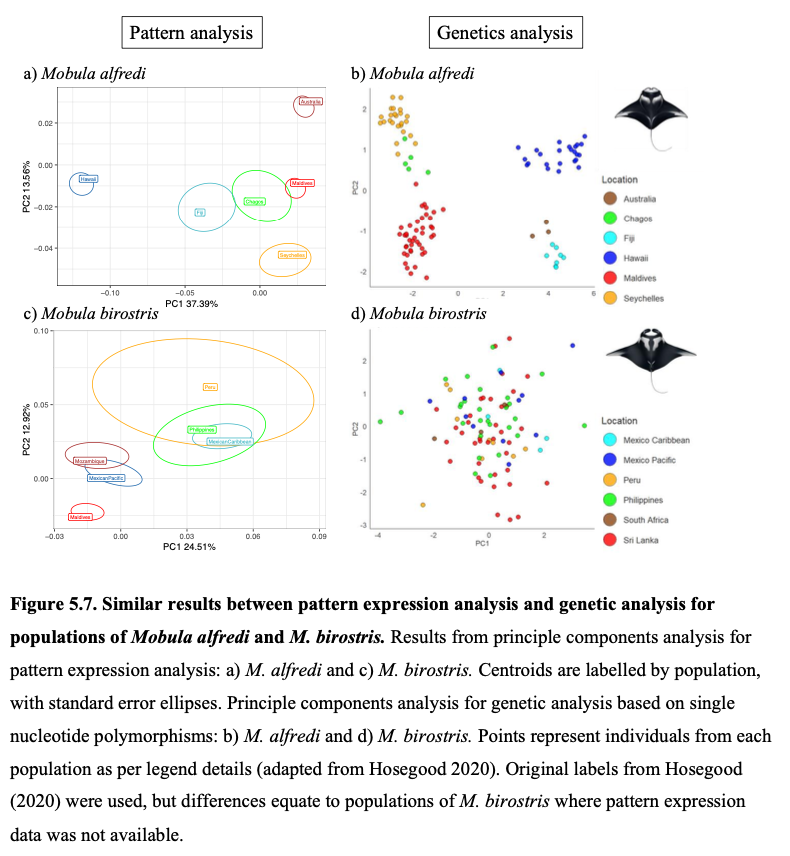
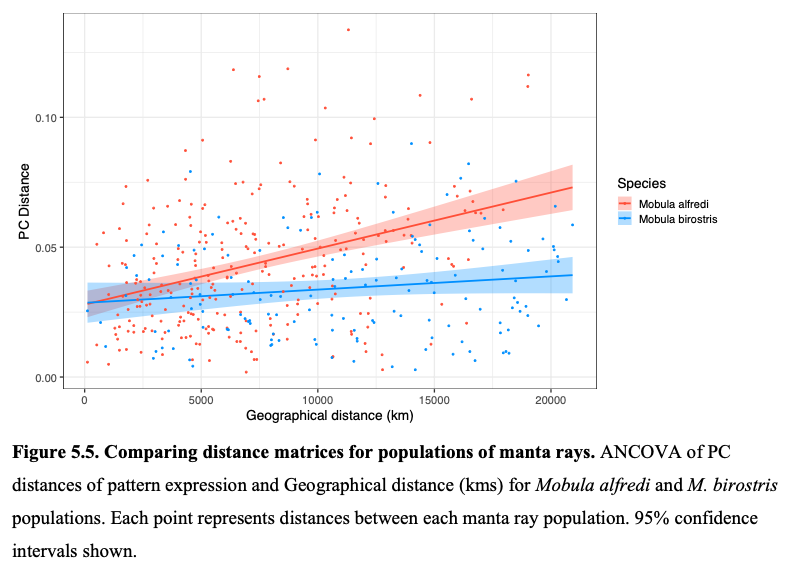
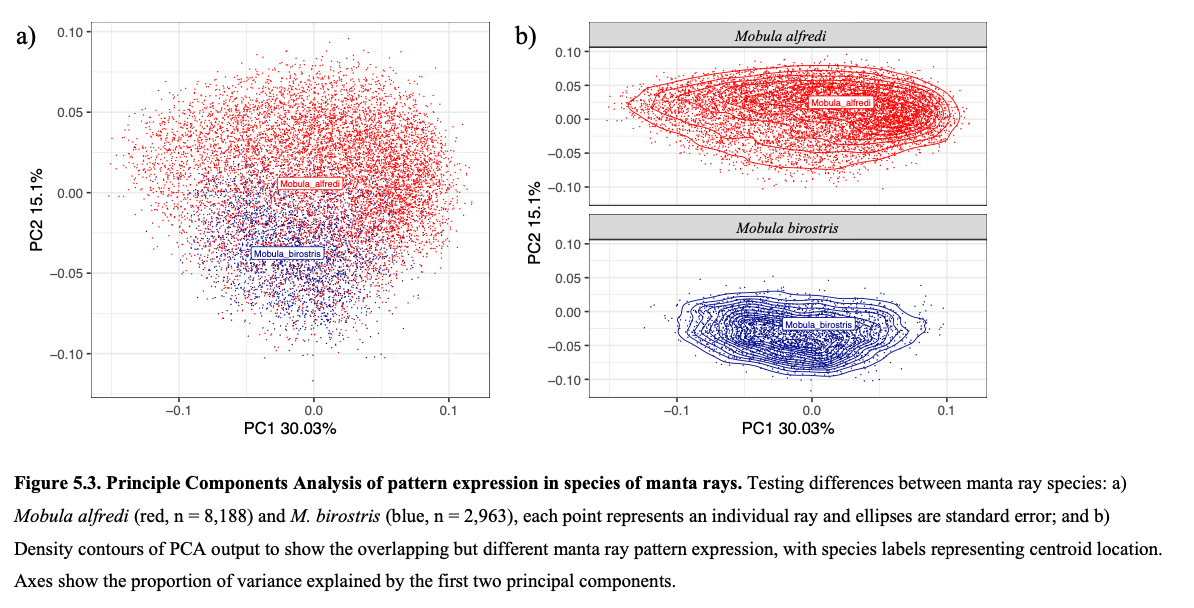
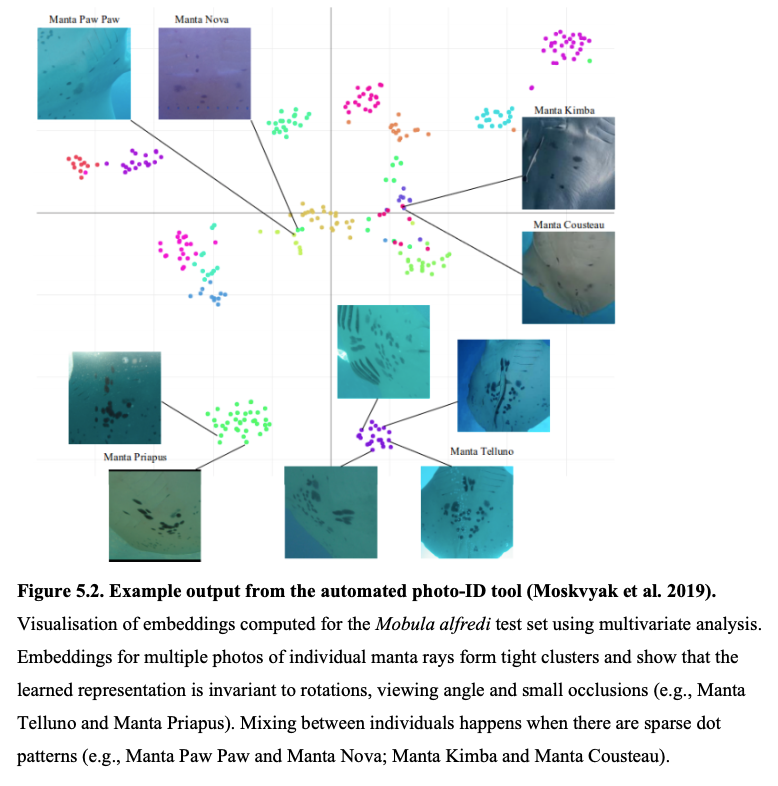
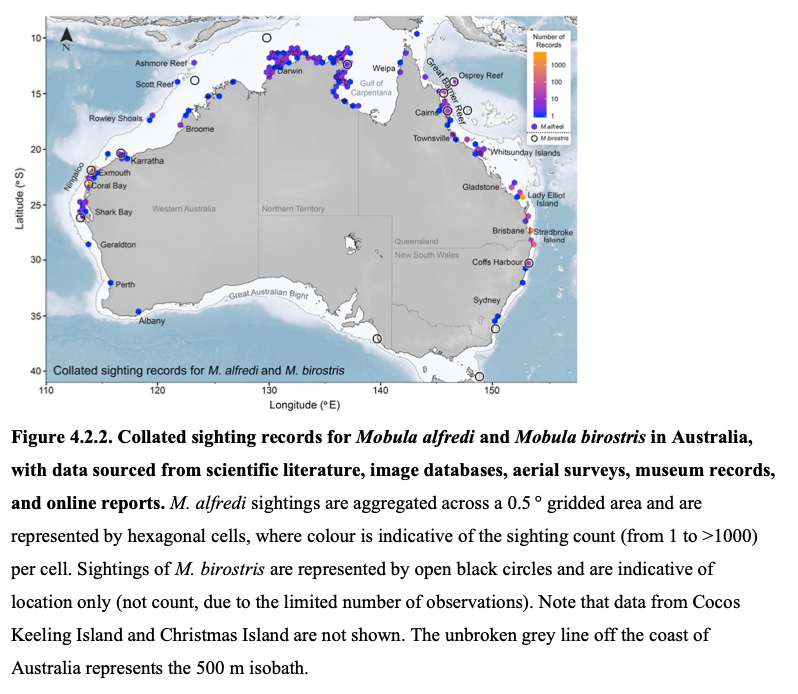
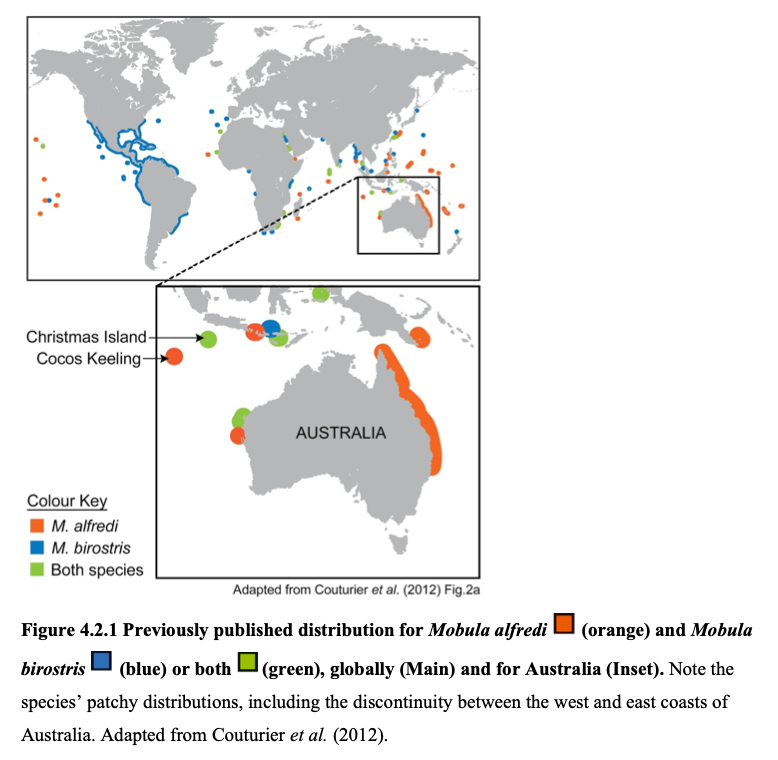
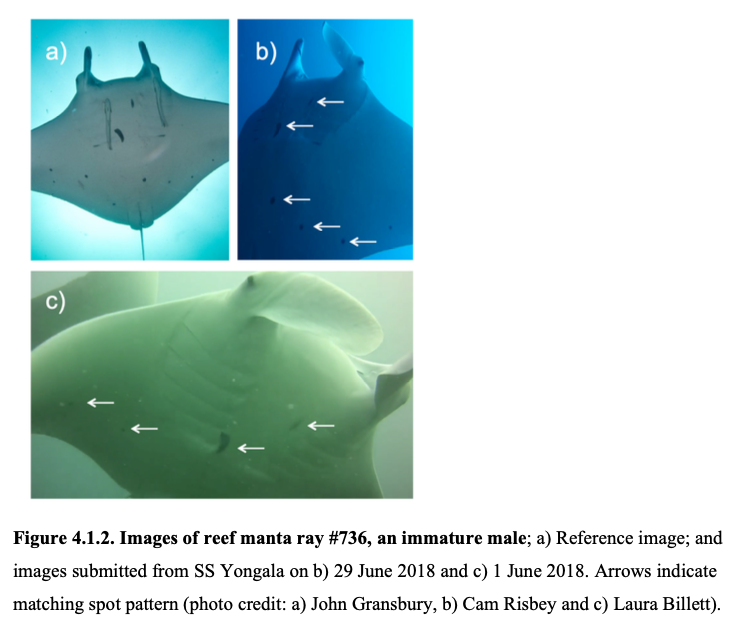
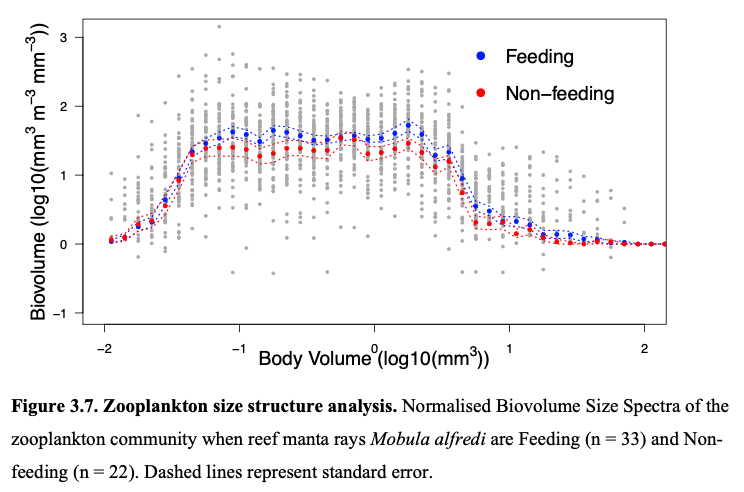
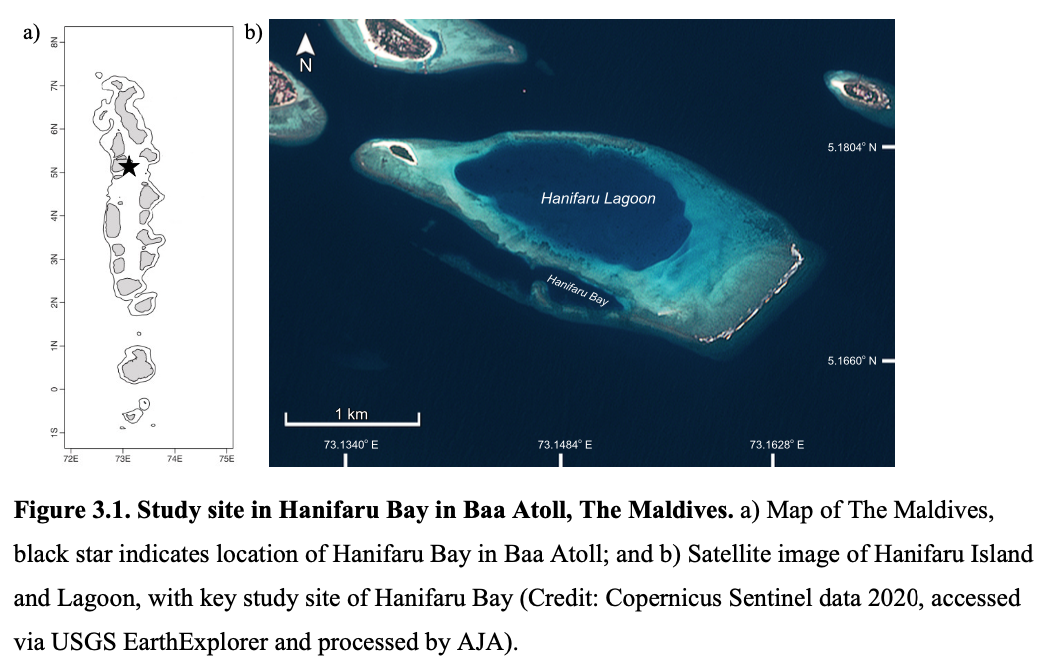

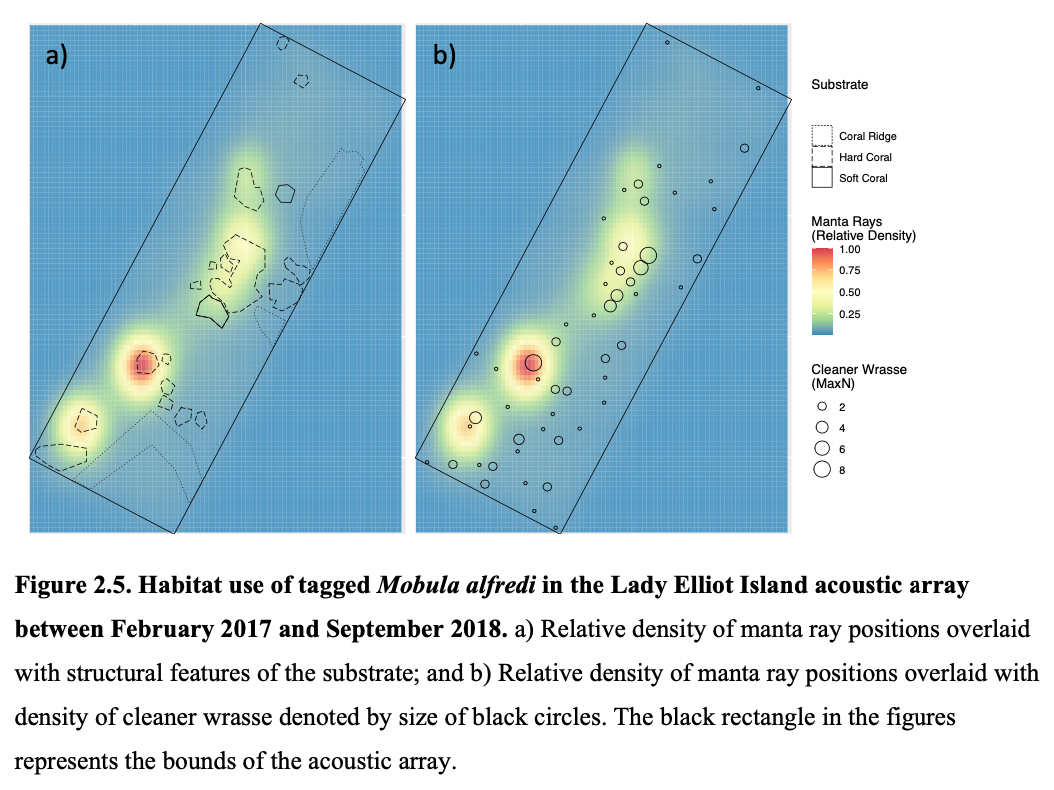
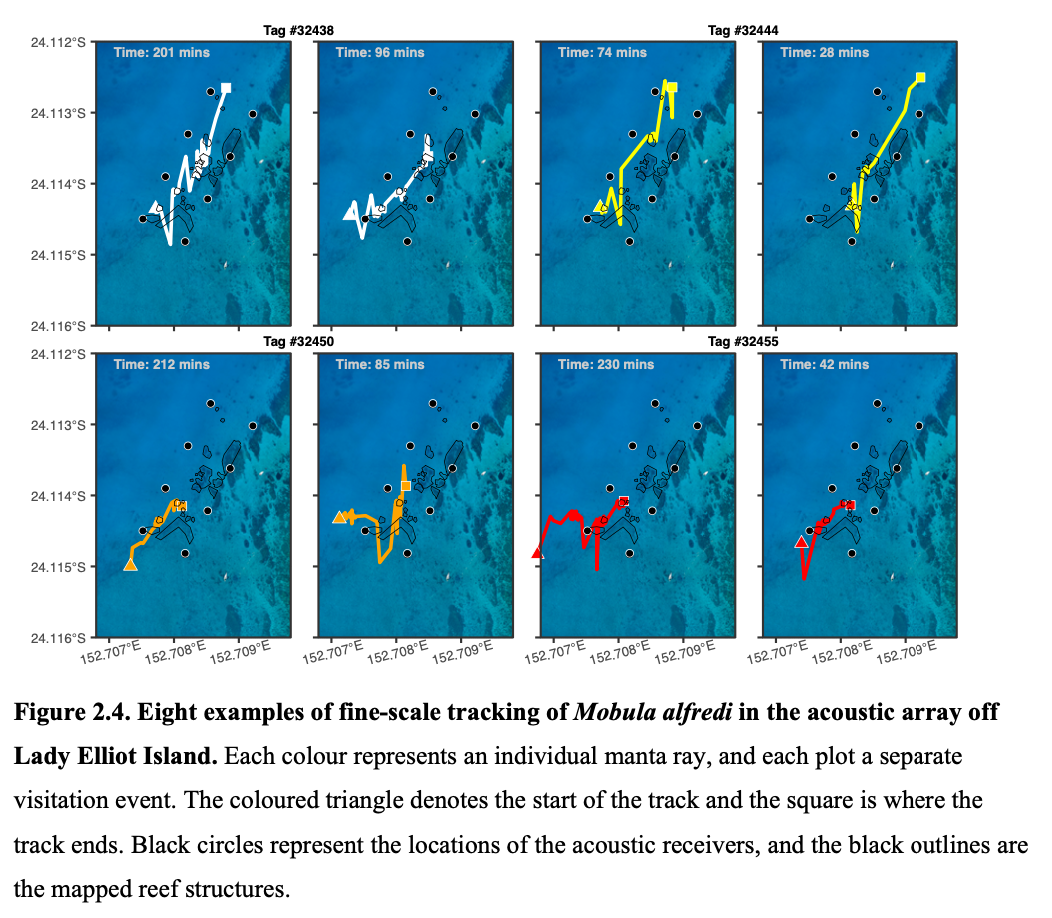

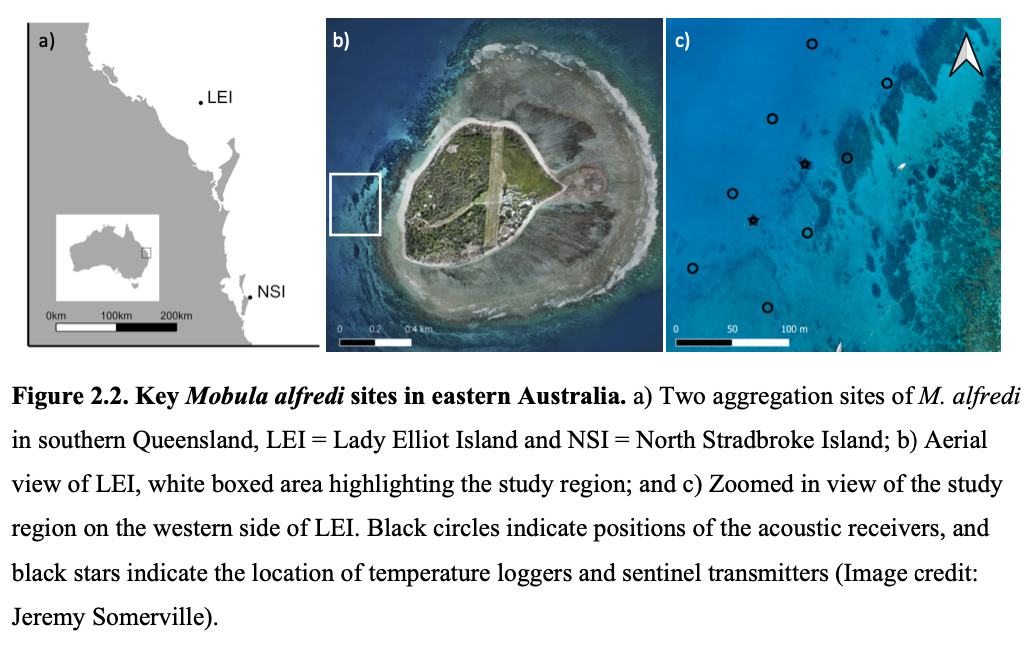
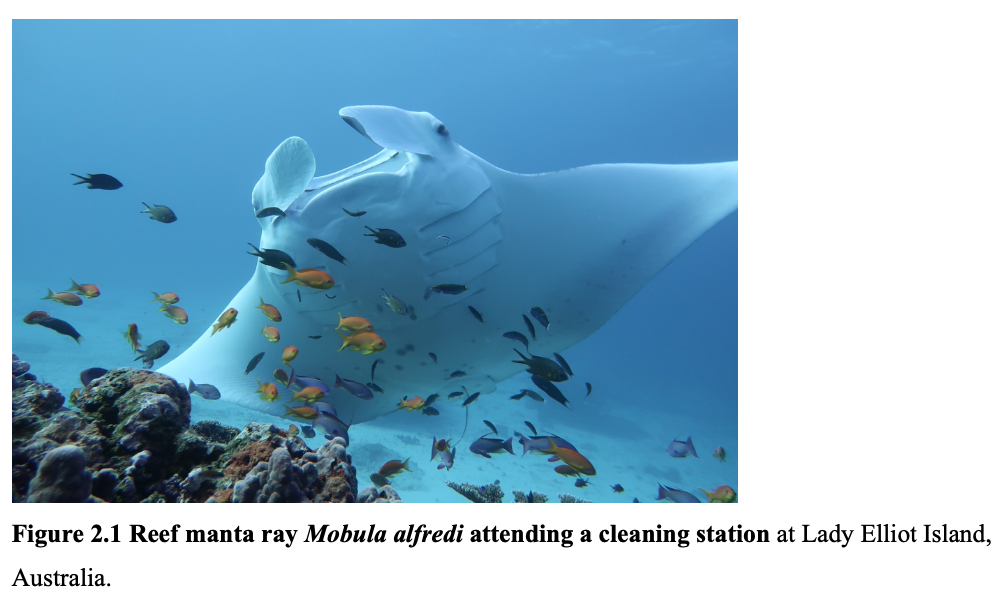
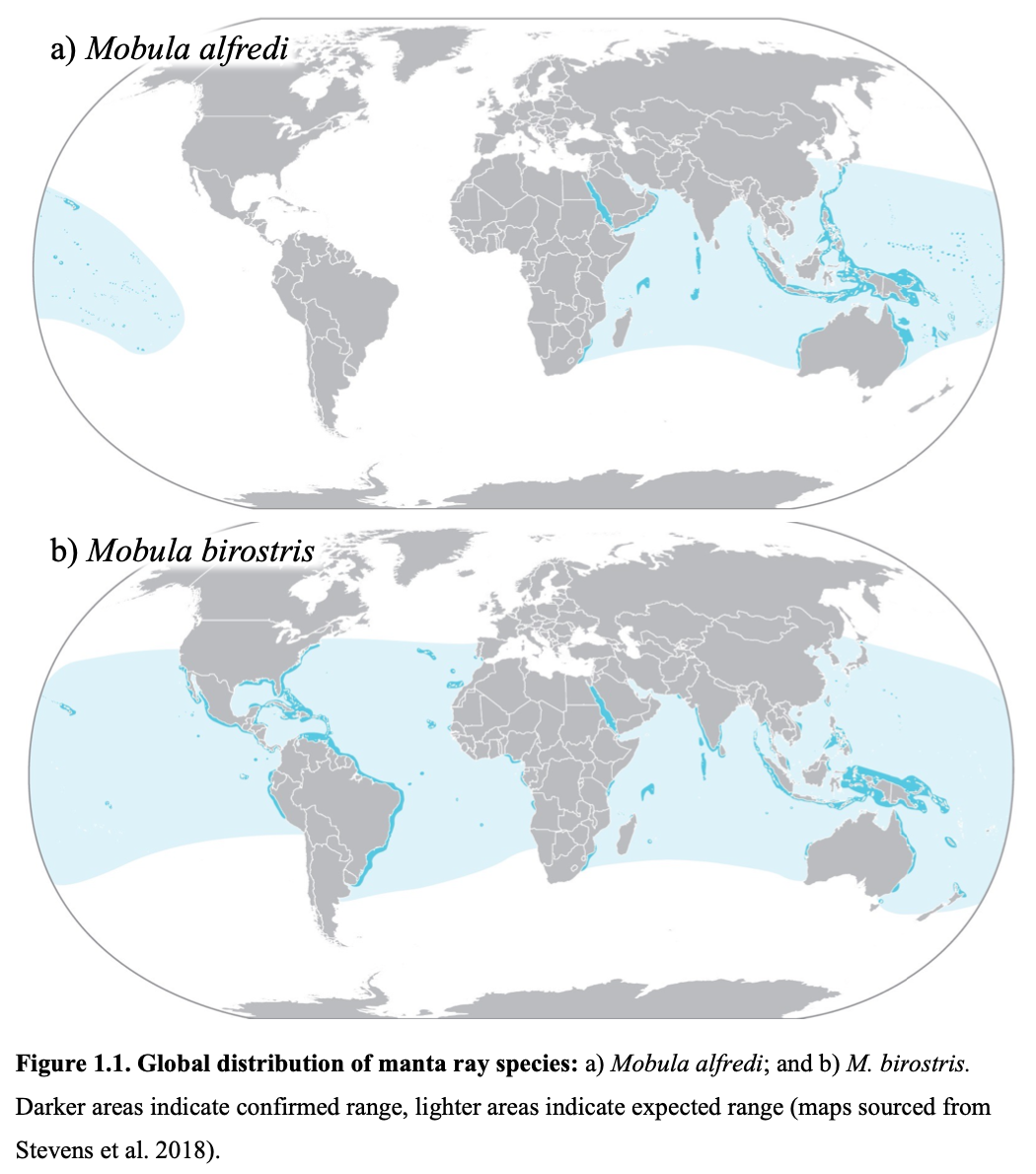

Summary: Understanding the movements and habitat use of manta rays is crucial for their conservation. This research investigated the spatial ecology of reef and oceanic manta rays, their habitat preferences, and foraging behavior. Cleaning stations played a significant role in reef visitation for the species. In Hanifaru Bay, Maldives, zooplankton abundance influenced manta ray presence and feeding behavior. Manta rays demonstrated extensive point-to-point movements, highlighting the need for cross-jurisdictional protection. Phenotypic traits and spot patterns provided evidence of population connectivity. The study contributes valuable insights into manta ray ecology at various scales.
Abstract
“Understanding the movements and habitat use of manta rays is key to improving the conservation status and management of these highly mobile, threatened species. Here I investigate the spatial ecology of reef manta rays Mobula alfredi and oceanic manta rays M. birostris, from their fine- scale habitat use, to their global scale connectivity. The drivers of individual M. alfredi fine-scale movements and habitat use were investigated at the reef off Lady Elliot Island, Great Barrier Reef. An array of acoustic listening stations was deployed around a high-use cleaning station area to monitor 42 acoustically-tagged rays. In-water surveys, conducted on SCUBA, mapped structural features within the array, and determined the number of cleaner wrasse Labroides dimidiatus and their location (cleaning stations). Space use by M. alfredi was significantly associated with L. dimidiatus distribution and hard coral structures. Manta rays visited these sites during daylight hours, with use affected by certain wind and tidal regimes. Cleaning behaviour dominated at this location, taking precedence over other behavioural traits, providing evidence that cleaning station attendance is a driver of reef visitation for this species.
To determine what may drive foraging aggregations of manta rays in surface waters, the food environment for M. alfredi in Hanifaru Bay, Maldives was investigated. This location acts to attract the largest known feeding aggregation of this species. Zooplankton dynamics in relation to manta ray presence, abundance and behaviour in the bay were sampled and analysed. It was found that M. alfredi was more abundant and fed more regularly when zooplankton biomass in the Bay was high. The prey density threshold for when manta rays were more likely to be feeding was established. This prey density was more than twice that calculated to meet their theoretical energy requirements, and more than four times that observed at other surface feeding sites for large planktivores. Also, the zooplankton community was significantly different between when manta rays were feeding, and when they were not. The dominant zooplankton species present when M. alfredi was feeding was of oceanic origin, which infers that intrusions of oceanic water occur at the site.
Citizen science and photo-identification (photo-ID) were used to update the known distance of travel for reef manta rays. Individual M. alfredi were confirmed to make point-to-point movements of over 1,150 km along the east coast of Australia – a significant extension of the known distance that this species may travel. Movements of this magnitude demonstrate that M. alfredi is clearly capable of making movements across jurisdictional boundaries where they may be subject to differing levels of protection. Non-traditional data collection approaches were used to update the distribution of both M. alfredi and M. birostris around the Australian coastline through a combination of: photo-ID databases; online sightings via social media channels (youtube, facebook, Instagram, vimeo etc); government records and; aerial surveys. A semi-continuous distribution of M. alfredi around the northern extent of the Australian coast, and along both east and west coastlines to approximately 30°S was found. Relatively sparse sighting records of M. birostris were used to explore the distribution of this less understood species in Australian waters.
On a global-scale, 52 photo-ID databases that contained images of 17,135 individuals of both M. alfredi and M. birostris were used to explore whether phenotypic traits could provide evidence of connectivity (or isolation) among geographically separated populations. A quantitative analysis of spot patterns on the ventral surface of each species was performed using machine learning and convolutional neural networks. The analyses indicated that spot patterns do differ significantly among regional populations, in support of known isolation or connectivity among populations based on pre-existing genetic and photo-ID information. However, high within-population variability suggests caution should be applied when using this approach. Further analysis, and development of the approach may provide insight into questions such as the heritability of spot patterns and familial lineages.
Through a variety of methodological approaches, questions about the spatial ecology of these large planktivorous rays, were answered. The findings in this thesis are of value in our overall understanding of the species – from the drivers of local-scale habitat use, to regional and global distributions.”
About The Author - Dr. Asia Ono Armstrong (Haines)
Dr. Asia Armstrong has a deep-rooted connection to the sea due to her seafaring parents and a childhood spent by the ocean. She developed a fascination for marine life early on, particularly drawn to creatures like manta rays and pelagic nudibranchs. She is currently a Research Fellow at the University of the Sunshine Coast, engaged in two major projects: Leaf to Reef and Project Manta.
Leaf to Reef is a comprehensive research initiative centered on Lady Elliot Island, located on the southern end of the Great Barrier Reef. The project aims to understand how the island's ecosystem will respond to climate change impacts. Project Manta, on the other hand, focuses on studying the population, behavior, and biology of manta rays in eastern Australia. Asia is highly passionate about manta rays, which led her to undertake a PhD and contribute to the knowledge about their biology and ecology.
Despite facing personal challenges such as a pregnancy and the passing of her father, Asia persevered and completed her PhD. Her determination is driven by her desire to ensure a healthy environment for her daughter's future and to be part of conservation efforts. She views the Great Barrier Reef as an awe-inspiring ecosystem with remarkable species diversity. Her work emphasizes the importance of addressing climate change and unsustainable fishing practices to preserve the Reef's vitality.
Read more about the affiliate project: Project MANTA


